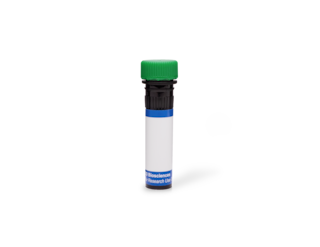-
Reagents
- Flow Cytometry Reagents
-
Western Blotting and Molecular Reagents
- Immunoassay Reagents
-
Single-Cell Multiomics Reagents
- BD® OMICS-Guard Sample Preservation Buffer
- BD® AbSeq Assay
- BD® Single-Cell Multiplexing Kit
- BD Rhapsody™ ATAC-Seq Assays
- BD Rhapsody™ Whole Transcriptome Analysis (WTA) Amplification Kit
- BD Rhapsody™ TCR/BCR Next Multiomic Assays
- BD Rhapsody™ Targeted mRNA Kits
- BD Rhapsody™ Accessory Kits
- BD® OMICS-One Protein Panels
-
Functional Assays
-
Microscopy and Imaging Reagents
-
Cell Preparation and Separation Reagents
-
- BD® OMICS-Guard Sample Preservation Buffer
- BD® AbSeq Assay
- BD® Single-Cell Multiplexing Kit
- BD Rhapsody™ ATAC-Seq Assays
- BD Rhapsody™ Whole Transcriptome Analysis (WTA) Amplification Kit
- BD Rhapsody™ TCR/BCR Next Multiomic Assays
- BD Rhapsody™ Targeted mRNA Kits
- BD Rhapsody™ Accessory Kits
- BD® OMICS-One Protein Panels
- Germany (English)
-
Change location/language
Old Browser
This page has been recently translated and is available in French now.
Looks like you're visiting us from {countryName}.
Would you like to stay on the current location site or be switched to your location?
BD Transduction Laboratories™ Purified Mouse Anti-CD51
Clone 21/CD51 (RUO)





Western blot analysis of CD51 (Integrin αV) on a rat cerebrum lysate. Lane 1: 1:250, lane 2: 1:500, lane 3: 1:1000 dilution of the anti-CD51 antibody.

Immunofluorescence staining of human endothelial cells.




Regulatory Status Legend
Any use of products other than the permitted use without the express written authorization of Becton, Dickinson and Company is strictly prohibited.
Preparation And Storage
Recommended Assay Procedures
Western blot: Please refer to http://www.bdbiosciences.com/pharmingen/protocols/Western_Blotting.shtml
Product Notices
- Since applications vary, each investigator should titrate the reagent to obtain optimal results.
- Please refer to www.bdbiosciences.com/us/s/resources for technical protocols.
- Source of all serum proteins is from USDA inspected abattoirs located in the United States.
- Caution: Sodium azide yields highly toxic hydrazoic acid under acidic conditions. Dilute azide compounds in running water before discarding to avoid accumulation of potentially explosive deposits in plumbing.
Companion Products


Integrins are a family of proteins that mediate intercellular adhesion or adherence to extracellular matrix proteins. Their roles are essential for embryonic development, tumor metastasis, organ function, and proper immune cell function. Family members are heterodimers that contain a larger α subunit that is unique to each individual receptor and a smaller β subunit that can be shared by several receptors. Based on β subunit content, integrins are divided into the subfamilies β1, β2, and β3. The β3 subfamily contains the vitronectin receptor (αVβ3) and the platelet protein gpIIb/IIIa. The α chain of the vitronectin receptor (VNRα, CD51, integrin αV) has been reported to consist of a disulfide-linked large extracellular (125 kDa) subunit and a smaller (25 kDa) membrane-anchored subunit. The large subunit contains multiple sequences with homology to calcium-binding sites in other proteins and an RGD-dependent ligand-binding site, while the small subunit contains a transmembrane domain and a short cytoplasmic domain. VNRα has been reported to be noncovalently associated with the VNR β3-chain (CD61, gpIIIa). The VNR mediates cell adhesion to RGD-containing ligands such as vitronectin, von Willebrand factor, fibrinogen, and thrombospondin.
This antibody is routinely tested by western blot analysis. Other applications were tested at BD Biosciences Pharmingen during antibody development only or reported in the literature.
Development References (3)
-
Bodary SC, McLean JW. The integrin beta 1 subunit associates with the vitronectin receptor alpha v subunit to form a novel vitronectin receptor in a human embryonic kidney cell line. J Biol Chem. 1990; 265(11):5938-5941. (Biology). View Reference
-
Suzuki S, Argraves WS, Arai H. Amino acid sequence of the vitronectin receptor alpha subunit and comparative expression of adhesion receptor mRNAs. J Biol Chem. 1987; 262(29):14080-14085. (Biology). View Reference
-
Suzuki S, Argraves WS, Pytela R. cDNA and amino acid sequences of the cell adhesion protein receptor recognizing vitronectin reveal a transmembrane domain and homologies with other adhesion protein receptors. Proc Natl Acad Sci U S A. 1986; 83(22):8614-8618. (Biology). View Reference
Please refer to Support Documents for Quality Certificates
Global - Refer to manufacturer's instructions for use and related User Manuals and Technical data sheets before using this products as described
Comparisons, where applicable, are made against older BD Technology, manual methods or are general performance claims. Comparisons are not made against non-BD technologies, unless otherwise noted.
For Research Use Only. Not for use in diagnostic or therapeutic procedures.